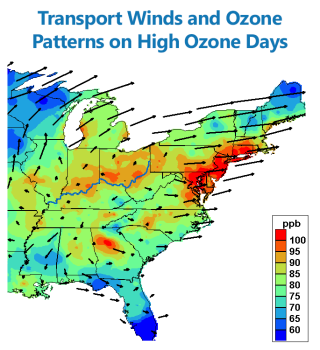What is Cross-State Air Pollution?

The total pollution in any area forms from the combination of:
- Air pollution from local emissions sources
- Cross-state air pollution from emission sources at another location that is blown in by the wind
Cross-state air pollution, also known as interstate air pollution or transported air pollution, is emitted at one location (upwind) and then blown by wind to another location (downwind). Some upwind emissions may come from a different state.
Emissions of sulfur dioxide (SO2) and nitrogen oxides (NOX) from upwind sources can undergo chemical reactions in the atmosphere to form fine particle pollution (PM2.5 or soot). Similarly, NOX emissions can react in the atmosphere to create ground-level ozone (smog) pollution. These pollutants can travel great distances (i.e., hundreds of miles), affecting regional air quality and public health and making it difficult for downwind states to meet health-based air quality standards for PM2.5 and ozone.
Next, find out how the Clean Air Act addresses Cross-State Air Pollution or learn about how EPA's programs address Cross-State Air Pollution.
